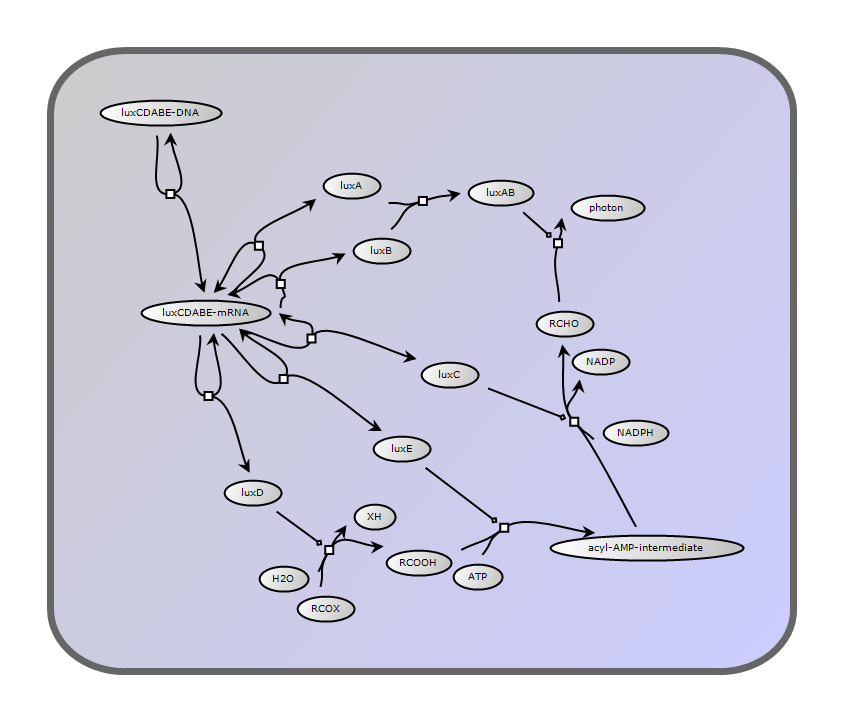Team:Cambridge/Bioluminescence/Vibrio Modelling
From 2010.igem.org
(Difference between revisions)
(New page: {{:Team:Cambridge/Templates/headerMinimalprototype}} {{:Team:Cambridge/Templates/headerbar|colour=#386abc|title=Project Vibrio: Introduction}} {{:Team:Cambridge/Templates/RightImage|image=...) |
|||
| Line 1: | Line 1: | ||
{{:Team:Cambridge/Templates/headerMinimalprototype}} | {{:Team:Cambridge/Templates/headerMinimalprototype}} | ||
{{:Team:Cambridge/Templates/headerbar|colour=#386abc|title=Project Vibrio: Introduction}} | {{:Team:Cambridge/Templates/headerbar|colour=#386abc|title=Project Vibrio: Introduction}} | ||
| - | + | We constructed a '''mathematical model''' of the Vibrio lux system. Unfortunately we were not able to characterise the individual genes, luxC, luxD, luxE, luxA and luxB, well enough to gain the kinetic data needed to model this system. | |
| - | ''' | + | [[Image:Cambridge-Vibrio-model.png |700px]] |
| - | + | ==The literature== | |
| - | + | [http://www.ncbi.nlm.nih.gov/pubmed/19081933 Welham and Stekel (2009)] developed a mathematical model of the ''Xenorhabdus luminescens'' system. The organisation and function of the lux genes in this organism is very comparible to those of ''V. fischeri''. | |
| - | + | ||
| - | + | ||
| - | == | + | |
| - | + | ||
| - | + | ||
| - | + | ||
| - | + | ||
| - | + | ||
| - | + | ||
| - | + | ||
| - | + | ||
{{:Team:Cambridge/Templates/footer}} | {{:Team:Cambridge/Templates/footer}} | ||
Revision as of 11:11, 24 October 2010

Project Vibrio: Introduction
We constructed a mathematical model of the Vibrio lux system. Unfortunately we were not able to characterise the individual genes, luxC, luxD, luxE, luxA and luxB, well enough to gain the kinetic data needed to model this system.


The literature
[http://www.ncbi.nlm.nih.gov/pubmed/19081933 Welham and Stekel (2009)] developed a mathematical model of the Xenorhabdus luminescens system. The organisation and function of the lux genes in this organism is very comparible to those of V. fischeri.
 "
"